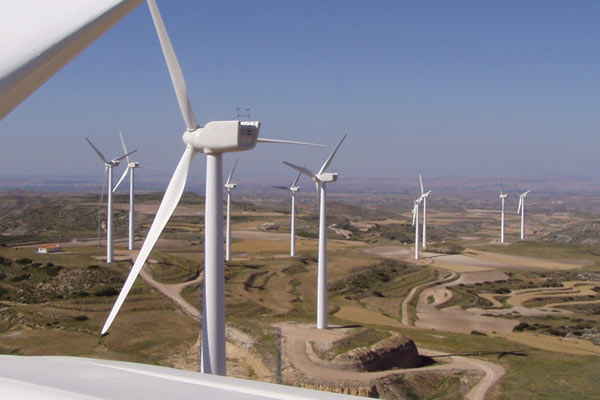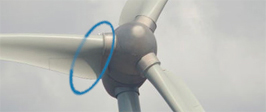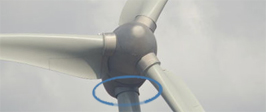Laulagun is a supplier of large blade (Pitch) and slewing (Yaw) bearings for onshore wind turbines, ranging from small wind turbines to turbines up to 6,XMW output.
We manufacture large customised slewing bearings and always design our products in direct cooperation with the customer. In addition, we rely on a team of engineering experts for new developments and design improvements.
Laulagun Bearings has designed, manufactured and marketed large bearings as well as slewing rings since 1973, based on more than 25 years of experience in the wind turbine industry. We supply to major European OEMs, with the highest demands in terms of quality and reliability. Laulagun Bearings is one of the largest leading European manufacturers, providing equipment for around 5 GW of wind turbines per year and has already produced more than 50,000 blade bearings (Pitch) and slewing rings (Yaw).

Blade Bearings (Pitch)

A blade bearing allows the blade to be positioned at the right pitch angles for maximum efficiency of the generator and to control power output as well as the load. It also represents the main braking system and is therefore an element of maximum safety.
Consequently, the bearing must offer a low and constant friction value under external load.
When not equipped with a by-pass system, it must be able to withstand lightning currents without suffering damage.
Blade bearings are subjected to fluctuating, stochastic loads, alternating a swinging operation over a small angular section with long stationary periods.
The most common type of bearing used as a blade bearing is the double row or two-row of eight-point contact balls.
There are two main drive configurations:
- Electric drive. This means that the torque required to turn the blade is applied via a sprocket driven by a motor reducer. The torque is transmitted through milled teeth on the ring attached to the blade. Approximately 90% of the time the sprocket will strike in a circular section of the crown that is below 10º. Therefore, a small number of teeth can withstand most working cycles and a lubrication system is needed to ensure correct lubrication at the position close to 0°. For example, a lubricating sprocket in combination with the Microlubgear.
- Hydraulic drive. The joint of one or two cylinders is attached to the root of the blade to provide the torque necessary for the rotation of the blade. The maximum rotation in service for machine braking, flag position, is between 90 and 100º.
Slewing ring (Yaw)
 The yaw bearings position the nacelle in the prevailing wind direction. These are driven by a number of sprockets and gearboxes placed on their perimeter which engage with the toothed ring attached to the tower. The most common yaw bearing types are single row of four point contact balls as well as double row of eight point contact balls, with internal or external teeth.
The yaw bearings position the nacelle in the prevailing wind direction. These are driven by a number of sprockets and gearboxes placed on their perimeter which engage with the toothed ring attached to the tower. The most common yaw bearing types are single row of four point contact balls as well as double row of eight point contact balls, with internal or external teeth.

